Synnema triflorum
Scientific name: Synnema triflorum
Family: Acanthaceae
Maximum size reached under cultivation: 30 - 45 cm (11.81 - 17.72 inch)
014
Recommended pH range: 6.5 - 7.5
Recommended water hardness: 4 - 18°dGH (71.43 - 321.43ppm)
0°C 32°F30°C 86°F
Recommended temperature range: 20 - 27 °C (68 - 80.6°F)
Preferred propagation method: Cuttings
Native to: South Asia
Growth rate: Fast
Recommended substrate: Gravel
Lighting requirements: Bright
Ideal placement in tank: Background
Common Name
Synnema triflorum (sometimes referred to as False Water Wisteria)
Origin
Synnema triflorum is native to Southeast Asia, particularly regions such as Indonesia, Malaysia, and Thailand. It naturally grows in wetland areas, along riverbanks, and in seasonally flooded zones, making it well adapted to both aquatic and semi-aquatic environments.
Growing Conditions
This plant thrives in both submerged and emersed conditions. When grown underwater, its leaves remain soft and flexible, adapting to flowing or still water. In emersed settings, the plant develops stronger stems and may produce small, delicate flowers.
Synnema triflorum prefers bright lighting and nutrient-rich water to maintain healthy, vigorous growth. It tolerates a pH range of 6.5 to 7.5 and water hardness between 4–18 dGH. The optimal temperature for this species is 20–27°C (68–80.6°F). The use of CO2 supplementation and regular fertilization will enhance coloration and leaf size.
Planting Area
Due to its potential height of 30–45cm (11.8–17.7 inches), Synnema triflorum is best placed in the background of the aquarium. It provides shelter for fish and fry while contributing to the natural aquascape. The broad leaves should not be crowded; adequate spacing is recommended for proper development.
Propagation
This plant is propagated easily through stem cuttings. Take a healthy side shoot or top portion of the stem and remove the lower leaves. Insert the bare section into the gravel substrate, being careful not to damage the stem. Within a short period, the cutting will produce roots and grow into a new plant. In emersed setups, flowering is possible, but vegetative propagation remains the most reliable method.
Difficulty
Synnema triflorum is considered a moderately easy plant to grow. While adaptable, it performs best in well-maintained aquariums with consistent lighting and nutrient dosing. Sudden deficiencies in iron or macronutrients may cause leaf yellowing or stunted growth.
Short Description
Synnema triflorum is an attractive and fast-growing aquatic plant suitable for background placement in tropical freshwater tanks. Often misidentified as Hygrophila difformis, this species features broader, less dissected leaves and a more upright growth habit.
With proper care, it can grow both submerged and emersed, and in open-top aquariums it may extend above the waterline. Its ability to absorb nitrates and excess nutrients helps improve water quality and control algae. Regular trimming helps manage its size and encourages bushier growth.
Although sometimes referred to as "False Water Wisteria," Synnema triflorum is a distinct species and should not be confused with Hygrophila difformis.

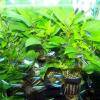 Hygrophila corymbosa
Hygrophila corymbosa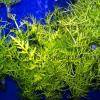 Hygrophila difformis
Hygrophila difformis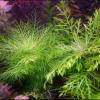 Hygrophila difformis variegated
Hygrophila difformis variegated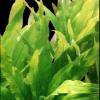 Hygrophila guianensis
Hygrophila guianensis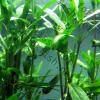 Hygrophila polysperma
Hygrophila polysperma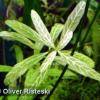 Hygrophila polysperma ‘Rosanervig’
Hygrophila polysperma ‘Rosanervig’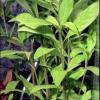 Hygrophila salicifolia
Hygrophila salicifolia